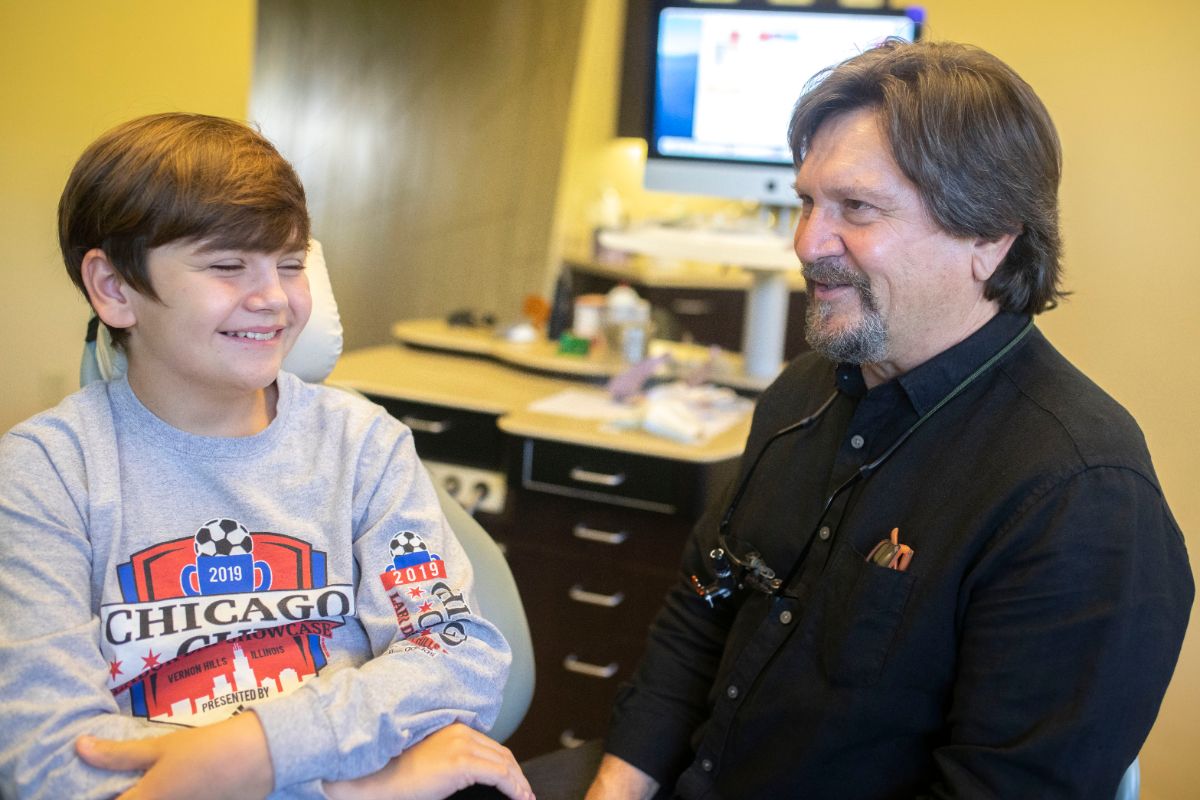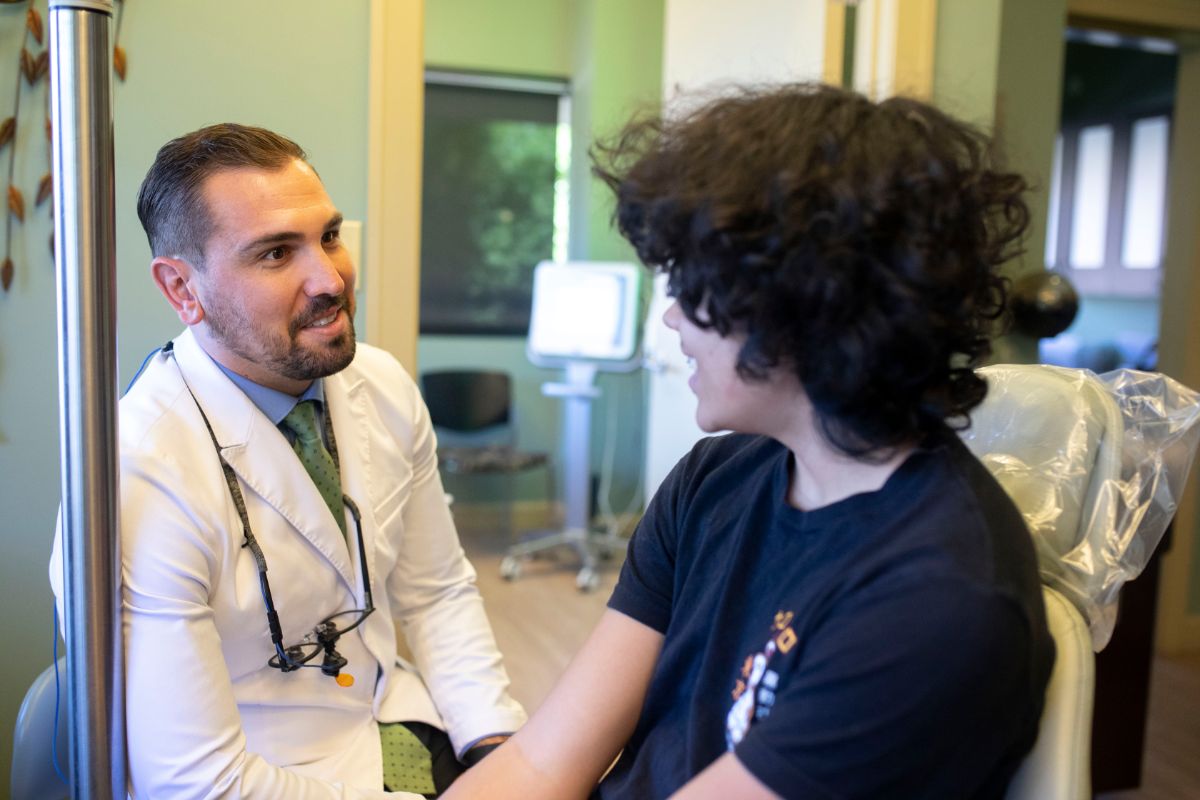These days, we have an entire world of information at our fingertips. There’s no denying that this makes our lives easier, but there are times it can be a double-edged sword, too. This is especially true when we’re looking for answers on important topics like medical, dental, or orthodontic issues. Most queries return so many results that it can be stressful to try and determine which are from trusted resources and which ones are questionable. If you’ve been trying to determine if your child may benefit from orthodontic treatment, you may be feeling overwhelmed or confused by everything you’re reading. Serrano Orthodontics is here to help you understand what a long-term plan for your child’s orthodontic care could look like! Keep reading below to learn more.
The first step in your child’s orthodontic journey
Just as regular dental appointments are important for your child’s smile, an early orthodontic evaluation can ensure their oral health. While there’s no minimum age for a child to have their first visit with us, the American Association of Orthodontists recommends that all children have an orthodontic exam by around the age of seven. At this point, most kids will have a good mix of permanent and baby teeth. These dental “landmarks” give orthodontists the chance to find, diagnose, and treat many common dental issues before they can cause more serious problems.
Early intervention like this can also help reduce the need for more invasive orthodontic treatment later in life. This process can be summed up by something we call two-phase treatment, which is a specialized service that allows us to treat our younger patients with a proactive rather than a reactive one. It may be recommended for children we anticipate will need orthodontics as they grow.
Understanding two-phase orthodontic treatment
As you may have guessed from the name, two-phase treatment involves a child receiving orthodontic treatment at two separate times, with a break in between. The first phase of treatment is usually initiated when the child still has a mix of primary and permanent teeth. This is then followed by a period of rest before the second phase begins when most or all of the adult teeth have emerged.
With two-phase treatment, we can create a better environment for a child’s permanent teeth to grow into by
- creating a more optimal relationship between the teeth and jaws
- aligning the teeth, resulting in a straighter smile
- positioning the teeth and jaws for more pleasing facial symmetry
This gives our young patients the best chance for a healthy, attractive, and fully functional smile! During your child’s initial orthodontic examination with one of our doctors, they’ll receive a thorough inspection of their teeth and jaws. We may recommend two-phase treatment if our doctors believe
- your child will be prone to a particular problem that we want to keep from developing (preventive treatment)
- your child already has a developing problem that we now want to intercept (interceptive treatment)
- your child’s jawbones may need a bit of guidance as they grow (growth modification)
Our expert team follows the normal patterns of childhood growth and development, as this gives us the best chance to improve and correct orthodontic issues at the most opportune time. Many problems that can be treated relatively easily in a growing child will require more invasive treatment as they age and their jawbones stop growing. Early treatment can often achieve lasting results for many of these issues, and may even lessen the impact of others. Most patients will still require a second phase of treatment to complete the alignment process we begin with the first phase, however.
How two-phase treatment works
Knowing the basics of each phase and what goes on during the resting period can help you understand how the whole process works together to improve your child’s overall oral health.
Phase I
The purpose of Phase I treatment is to guide the child’s jaw development so that it can better accommodate all of their permanent teeth. There are numerous other benefits as well, including an improvement in the way the upper and lower jaws fit together and the ability to bite, chew, and digest food more effectively. Phase I treatment can also reduce the risk of tooth damage due to crowding, misalignment, or malformed jaws.
Treatment in this phase contributes to long-term stability, meaning the teeth stay in whatever positions they’re guided to. The second phase of treatment continues this stabilizing process by moving the teeth into their final positions. Before we can begin this, there will be a period where the permanent teeth are emerging. While this is occurring, we’ll suspend any orthodontic treatment in order to give the teeth, jaws, and mouth a temporary break.
Resting Period
After we have successfully achieved the first phase of treatment, the remaining permanent teeth should have a clear path to erupt. We’ll keep teeth stable during the resting period by using either a space maintainer or a non-removable retainer.
Phase II
Everything starts coming together with this phase! We’ll normally initiate this phase once all of your child’s permanent teeth have erupted, and it will often require the use of traditional braces or clear aligner therapy. Once treatment is complete, we’ll provide your child with a retainer to ensure that the newly straightened teeth stay in place.
Give your child a lifetime of healthy smiles with Serrano Orthodontics
Here at Serrano Orthodontics, we believe your child’s smile is as unique as they are. What works for one patient may not be a good fit for another, and that’s why you’ll never catch us using a “one size fits all” approach to orthodontics! Our doctors will build a customized treatment plan for your child based on their specific needs, lifestyle, and goals. If you have a child ready for their first orthodontic evaluation, get in touch today to schedule a FREE consultation with our Chandler or Phoenix office.

